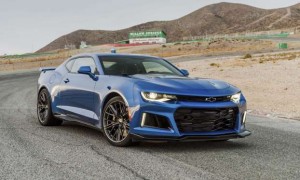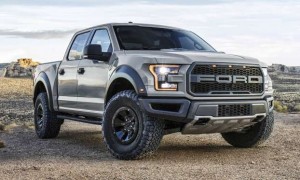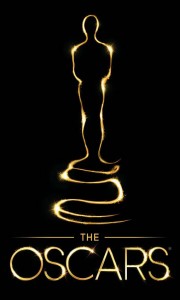Buying a car as an investment might pay off big time or leave you wondering what happened to your initial capital. Making an informed decision might improve your odds. The folks at Hagerty Insurance offer their annual “Hot List” of future collectible vehicles to aid your planning. The list includes vehicles carrying suggested retail prices (in U.S. dollars) from $25,255 to $70,000.
“All ten have that ‘it’ factor that makes them stand out from the crowd,” said McKeel Hagerty, CEO of Hagerty. “In some cases it’s power, in some cases it’s innovation or drivability, but all of them have the qualities that define a future classic.” Hagerty Insurance is one of the world’s leading insurance providers for classic vehicles, giving them a unique perspective for predicting which vehicles will be desirable in the future. Here’s Hagerty’s take on the cars of today that are likely to be classics in 25 years. To be included on the Hot List, a car must be produced in the 2017 model year and be priced below $100,000.
Alfa Romeo Giulia Quadrifoglio: MSRP: $72,000
This sexy Italian is not simply another high-performance sedan. The Quadrifoglio stands out from the crowd with Bi-Xenon headlights, dual-mode quad exhaust, high-performance Brembo brakes with red calipers, a carbon fiber active-aero front splitter and 19-inch bright Technica aluminum wheels. Inside are sport seats trimmed in leather and Alcantara, a useful rear seat and a nicely-integrated display screen.
The principal reason Giulia Quadrifoglio makes this list of future classics is its performance capabilities. Under the hood sits a 2.9-liter bi-turbo V6 engine rated at 505 horsepower with 443 lb-ft of torque as low as 2500 rpm, making this the most powerful production car ever from Alfa Romeo. The sprint to 60 mph takes a mere 3.8 seconds on the way to a top speed of 191 mph. With Brembo 6-piston front and 4-piston rear brakes, stopping power is equally impressive – taking just 102 feet to stop from 60 mph. If that isn’t good enough, the Giulia Quadrifoglio lapped the famed Nurburgring race circuit in Germany in 7 minutes 32 seconds – the fastest time ever recorded by a 4-door production sedan.
Audi TT RS: MSRP: $60,000 (est.)
The Audi TT has always offered high performance wrapped in a very attractive package, but the TT RS takes everything up a notch. With its muscular front end, large air inlets and fixed rear spoiler, this TT looks like it means business. And it does. Audi fitted this RS variant with a newly-developed 5-cylinder engine putting out 400 horsepower and 354 lb-ft of torque. With power being directed to all four wheels via Audi’s latest quattro all-wheel-drive system, this little sports car can reach 62 mph in 3.7 seconds. The convertible takes slightly longer – 3.9 seconds.
Very low and wide, the TT RS features a stiff chassis that delivers up to 1.2 Gs, making this special TT more than capable of handling twisty roads with ease. Four different driving modes – selectable by the driver – alter the character of the TT RS from a comfortable ride to ultimate performance. The RS will be available as a coupe or convertible, arriving in the U.S. later this year.
Chevrolet Camaro ZL1: MSRP: $61,140
 Chevrolet takes the Camaro to an all-new level with the introduction of the powerful ZL1. This Camaro variant sports a 6.2-liter supercharged V8 engine that puts out an incredible 640 horsepower and 640 lb-ft of torque. The big engine gets teamed with either a 6-speed manual gearbox or a new 10-speed automatic transmission with paddle shifters. Performance stats are impressive – a sprint to 60 mph takes a mere 3.5 seconds.
Chevrolet takes the Camaro to an all-new level with the introduction of the powerful ZL1. This Camaro variant sports a 6.2-liter supercharged V8 engine that puts out an incredible 640 horsepower and 640 lb-ft of torque. The big engine gets teamed with either a 6-speed manual gearbox or a new 10-speed automatic transmission with paddle shifters. Performance stats are impressive – a sprint to 60 mph takes a mere 3.5 seconds.
The new ZL1 gets differentiated from the rest of the Camaro lineup via a lower grille opening, a new hood, a larger front splitter, wider fenders, a wing-style rear spoiler and 20-inch forged aluminum wheels fitted with Goodyear Eagle F1 high-performance tires. As Hagerty states, “The legend continues to inspire today just as it did 50 years ago, as the Camaro reaches a whole new audience with this instant collector’s item.”
Chevrolet Colorado ZR2: MSRP: $40,995
Designed for high performance after the pavement ends, the Colorado ZR2 is a brand-new model from Chevrolet for 2017. This go-anywhere truck features purpose-built off-road suspension, Multimatic shocks, raised ground clearance, front and rear electronic differentials, skidplates and a wider track for increased stability. Large 31-inch Goodyear Wrangler Duratrac off-road tires provide maximum traction.
Power for the new Colorado ZR2 comes from either a 3.6-liter 308-horsepower V6 or a class-exclusive 2.8-liter Duramax diesel engine putting out 186 horsepower and an impressive 369 lb-ft of torque. All ZR2 Colorados are 4WD and can be set up with a crew cab or extended cab. “ZR2 is truly a segment of one and does everything well – from traversing heavy two-track trails to high-speed desert running and full-on rock crawling,” said Sandor Piszar, marketing director for Chevrolet trucks.
Chevrolet Corvette Grand Sport: MSRP: $65,450
The original Corvette Grand Sports were purpose-built racing prototypes that looked like production models – only five were ever built. There have been a few other Grand Sport Corvettes through the years, and the latest version is the C7 Grand Sport. “The racing DNA of the original Grand Sport race cars is in the 2017 model, adding greater dimensions of capability and driver involvement to the Corvette’s award-winning architecture, for a purer driving experience,” said Harlan Charles, Corvette product marketing manager.
This special Vette features Michelin Pilot Super Sport tires, Brembo brakes, a 7-speed manual transmission, an electronic limited-slip differential and unique springs. An optional Z07 package adds ceramic brakes and Pilot Sport Cup 2 tires, making the Grand Sport the ultimate track toy. Performance stats are impressive – the Grand Sport can corner at 1.2 Gs and reaches 60 mph in 3.6 seconds.
Fiat 124 Spider Abarth: MSRP: $28,195
It’s been several decades since Fiat sold a 2-seat roadster in America. The last one was the Fiat 124 Spider. Designed to honor its namesake, the new 124 Spider carries on the traditional long hood, short overhangs and, of course, rear-wheel drive of the original 124. The 124 shares basic architecture with one of the most popular 2-seat roadsters in the world, the Mazda MX-5 Miata.
Abarth is the sportiest variant of the 124 lineup, featuring a sport instrument cluster, matte gray trim, leather-trimmed sport seats, a sport steering wheel, performance-tuned suspension, a limited-slip differential, body-color sport fascias, a gunmetal roll bar, quad exhaust outlets and 17-inch gunmetal aluminum wheels. Power comes from an Italian-built 1.4-liter turbocharged 4-cylinder engine making 164 horsepower.
Ford F-150 Raptor: MSRP: $48,860
 Ford introduced this off-road performance truck in 2010 and it continues to be a unique offering in the U.S. truck market. An all-new version of the Raptor is now available with bold styling, enhanced suspension, an improved power-to-weight ratio and even better off-road agility than the previous version. Weighing 500 pounds less than its predecessor, the new Raptor boasts a 3.5-liter high-output EcoBoost engine that produces 450 horsepower and 510 lb-ft of torque, teamed with an advanced 10-speed automatic transmission.
Ford introduced this off-road performance truck in 2010 and it continues to be a unique offering in the U.S. truck market. An all-new version of the Raptor is now available with bold styling, enhanced suspension, an improved power-to-weight ratio and even better off-road agility than the previous version. Weighing 500 pounds less than its predecessor, the new Raptor boasts a 3.5-liter high-output EcoBoost engine that produces 450 horsepower and 510 lb-ft of torque, teamed with an advanced 10-speed automatic transmission.
To better utilize all that power, the Raptor features a Terrain Management System that optimizes performance for nearly any driving condition. “F-150 Raptor means superior off-road capability, from rock crawling to sand running,” said Dave Pericak, Ford Performance global director. “With the addition of SuperCrew, F-150 Raptor customers can leave the pavement behind – without sacrificing comfort and space,” Pericak stated.
Mazda Miata RF: MSRP: $31,555
 Mazda introduced an all-new MX-5 Miata last year, and the fun-to-drive roadster immediately made Hagerty’s Hot List. This year the Miata is back, but now with an innovative retractable fastback (RF). With the top in place the sports car looks like a hardtop coupe, but with the flip of a switch the rear section lifts while the roof folds with the window, ultimately hidden with only the rear section in place. With just the roof panel and rear window removed, the MX-5 looks more like a targa than a convertible. The top can be operated at speeds up to 6 mph and takes only 12 seconds to operate.
Mazda introduced an all-new MX-5 Miata last year, and the fun-to-drive roadster immediately made Hagerty’s Hot List. This year the Miata is back, but now with an innovative retractable fastback (RF). With the top in place the sports car looks like a hardtop coupe, but with the flip of a switch the rear section lifts while the roof folds with the window, ultimately hidden with only the rear section in place. With just the roof panel and rear window removed, the MX-5 looks more like a targa than a convertible. The top can be operated at speeds up to 6 mph and takes only 12 seconds to operate.
Aside from being slightly taller, the RF retains the same dimensions and proportions of the soft-top MX-5. Engineers were able to use the same real estate that stores the soft-top, so trunk space remains unchanged in the new RF. With a more rigid structure and quieter ride, the RF is likely to expose new customers to the “Zoom-Zoom” joy of driving a Miata.
Porsche 718 Cayman / Boxster: MSRP: $53,900 / $56,000
This German automaker has a rich history of sports cars – in 1950s and ‘60s, the company raced the legendary 718 lightweight mid-engine sports car. In the spirit of that original, Porsche brings us the 718 Boxster / Cayman. This updated sports car – Boxster is the roadster, Cayman is the hardtop – with the new naming designation is available with a newly-developed 2.0-liter turbocharged engine producing 300 horsepower, while the S upgrades to a 2.5-liter turbo producing 350 horsepower.
The new models offer fresh styling as well as updated chassis tuning and stronger brakes, which should make for great fun on the road or track. Performance numbers corroborate this claim – the Boxster S / Cayman S can reach 60 mph in just 4 seconds with a top speed of 177 mph. As Hagerty puts it, “Those who have a love for cars have a love for driving and few things are better to drive than the 2017 Porsche 718 lineup.”
Toyota 86: MSRP: $26,255
Called the Scion FR-S Coupe until last year when Toyota eliminated the Scion brand, the 86 is a lightweight, rear-wheel-drive sports car. Developed with Subaru (the 86 shares a platform with Subaru’s BRZ), the Toyota 86 is powered by a 2.0-liter flat 4-cylinder engine putting out 205 horsepower, teamed with either a 6-speed automatic or 6-speed manual transmission.
Last year the 86 received a few updates to go with the new name – the front end got new LED headlights, a revised bumper and a larger center air intake, giving the sport coupe a more aggressive stance. The rear of the car also received LED treatment as well as a new bumper design. With a low starting price and the fun-to-drive traits one looks for in a sports car, the Toyota 86 should be entertaining for the next 25 years.





